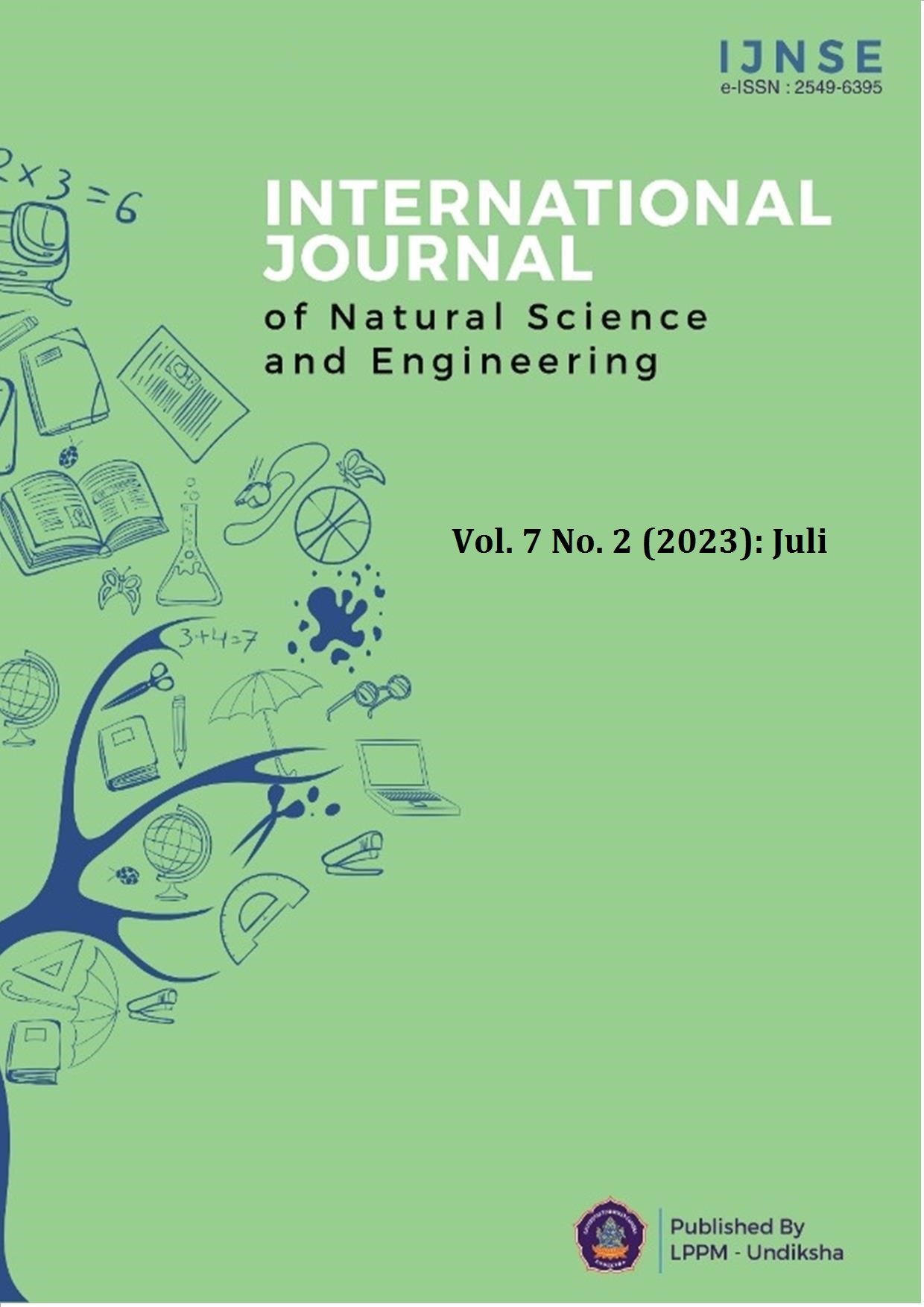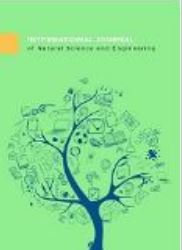Implementation of the Simple Multi-Attribute Rating Technique (SMART) for Decision Making on the Selection of the Best Prospective Employee
DOI:
https://doi.org/10.23887/ijnse.v7i2.54994Keywords:
selection, decision support system, SMART, employeeAbstract
Human resource management is the important part of the company, it can affect the success of the company. In the process of selecting new employees at the company, several problems often occur such as ineffective time, the company still sorts out the prospective employee files conventionally and then compared them with other files for assessment, so it took a long time because there are many applicants who apply with different quality. In addition, there can be subjectivity to the data from the assessment results of prospective employees for certain reasons such as having emotional closeness with stakeholders. It needed a system to handle these problems such as Decision Support System (DSS). This study proposed the Simple Multi-Attribute Rating Technique (SMART) approach in evaluating prospective employees. There are five criteria used in this study, namely written tests, interviews, education, award certificates, and work experience. This decision support system can help stakeholders, especially the head of the company's branches, to determine the best candidate for employees with accurate and objective results. In this research, a comparison was also made between the SMART method and a manual system, which obtained an accuracy rate of 91.33% with the proposed method. The SMART method can be an effective and reliable option for selecting job candidates, as it can minimize errors and improve recruitment efficiency, thereby positively impacting company productivity and employee performance.
References
Akhif, M., Andini, S., & Akhiyar, D. (2023). Implementation of a Decision Support System for Contract Employee Recruitment Selection using the Simple Multi Attribute Rating Technique (SMART) Method. Journal of Computer Scine and Information Technology, 9(3), 165–169. https://doi.org/10.35134/jcsitech.v9i3.82. DOI: https://doi.org/10.35134/jcsitech.v9i3.82
Armstrong, M., & Taylor, S. (2020). Armstrong’s handbook of human resource management practice. Kogan Page Publishers.
Assaad, R., & El-adaway, I. H. (2020). Bridge infrastructure asset management system: Comparative computational machine learning approach for evaluating and predicting deck deterioration conditions. Journal of Infrastructure Systems, 26(3). https://doi.org/10.1061/(ASCE)IS.1943-555X.0000572. DOI: https://doi.org/10.1061/(ASCE)IS.1943-555X.0000572
Castelló-Sirvent, F., & Meneses-Eraso, C. (2022). Research Agenda on Multiple-Criteria Decision-Making: New Academic Debates in Business and Management. Axioms, 11(10), 515. https://doi.org/10.3390/axioms11100515. DOI: https://doi.org/10.3390/axioms11100515
Castro-Lopez, A., Cervero, A., Galve-González, C., Puente, J., & Bernardo, A. B. (2022). Evaluating critical success factors in the permanence in Higher Education using multi-criteria decision-making. Higher Education Research & Development, 41(3), 628–646. https://doi.org/10.1080/07294360.2021.1877631. DOI: https://doi.org/10.1080/07294360.2021.1877631
Chakraborty, D., & Biswas, W. (2019). Evaluating the impact of human resource planning programs in addressing the strategic goal of the firm: An organizational perspective. Journal of Advances in Management Research, 16(5), 659–682. https://doi.org/10.1108/JAMR-01-2019-0007. DOI: https://doi.org/10.1108/JAMR-01-2019-0007
Fathurrozi, A., Damuri, A., Prastowo, A. T., & Rahmanto, Y. (2022). Sistem Pendukung Keputusan Pemilihan Lahan Tanaman Kopi Menggunakan Metode Complex Proportional Assessment (COPRAS). KLIK: Kajian Ilmiah Informatika Dan Komputer, 3(3), 228–237. https://doi.org/10.30865/klik.v3i3.605.
Gemawaty, C. A., & Yuliani, Y. (2023). Pemilihan Dosen Terbaik dengan Metode SAW (Simple Additive Weighting). JISAMAR (Journal of Information System, Applied, Management, Accounting and Research), 7(3), 711–717. https://doi.org/10.52362/jisamar.v7i3.1159.
Ginting, N. B., Widhyaestoeti, D., Jaenuddin, J., Rachmawati, F., & Maolani, Y. (2023). Implementation Of The Smart Method In The Decision Support System For Penalty Recommendations. JITK (Jurnal Ilmu Pengetahuan Dan Teknologi Komputer), 8(2), 133–138. https://doi.org/10.33480/jitk.v8i2.4138. DOI: https://doi.org/10.33480/jitk.v8i2.4138
Gupta, S., Modgil, S., Bhattacharyya, S., & Bose, I. (2022). Artificial intelligence for decision support systems in the field of operations research: review and future scope of research. Annals of Operations Research, 308, 215–274. https://doi.org/10.1007/s10479-020-03856-6. DOI: https://doi.org/10.1007/s10479-020-03856-6
Hasanah, N., & Ramdhan, W. (2022). Implementation Of Decision Support System With Smart Method In Giving Recommendations For Determining The Best Handphone. Jurnal Teknik Informatika (Jutif), 3(3), 611–618. https://doi.org/10.20884/1.jutif.2022.3.3.248.
Hasibuan, F. A., Ramdhan, W., & Kifti, W. M. (2022). Implementation Of The Multifactor Evaluation Process Method For The Eligibility Of Providing Advanced Teacher Professional Allowances At The Education Office Of Asahan Regency. Jurnal Teknik Informatika (Jutif), 3(6), 1623–163. https://doi.org/10.20884/1.jutif.2022.3.6.416. DOI: https://doi.org/10.20884/1.jutif.2022.3.6.416
Hasin, D. S., O’brien, C. P., Auriacombe, M., Borges, G., Bucholz, K., Budney, A., & Grant, B. F. (2013). DSM-5 criteria for substance use disorders: recommendations and rationale. American Journal of Psychiatry, 170(8), 834–851. https://doi.org/10.1176/appi.ajp.2013.12060782. DOI: https://doi.org/10.1176/appi.ajp.2013.12060782
Hwang, G., Lee, J., Park, J., & Chang, T. W. (2017). Developing performance measurement system for Internet of Things and smart factory environment. International Journal of Production Research, 55(9), 2590–2602. https://doi.org/10.1080/00207543.2016.1245883. DOI: https://doi.org/10.1080/00207543.2016.1245883
Inayah, F. N., Prasetiyowati, S. S., & Sibaroni, Y. (2021). Classification of Dengue Hemorrhagic Fever (DHF) Spread in Bandung using Hybrid Naïve Bayes, K-Nearest Neighbor, and Artificial Neural Network Methods. International Journal on Information and Communication Technology (IJoICT), 7(1), 10–20. https://doi.org/10.21108/ijoict.v7i1.562. DOI: https://doi.org/10.21108/ijoict.v7i1.562
Jahir, A., Setiawan, I., & Arta, A. D. (2019). Decision Support System to Determine the Achievement of Students Using Simple Multi-Attribute Rating Technique (SMART). International Journal of Informatics and Information Systems, 2(2), 39–47. https://doi.org/10.47738/ijiis.v2i2.12. DOI: https://doi.org/10.47738/ijiis.v2i2.12
Mahdi, I. M., Khalil, A. H., Mahdi, H. A., & Mansour, D. M. (2022). Decision support system for optimal bridge’ maintenance. International Journal of Construction Management, 22(3), 342–356. https://doi.org/10.1080/15623599.2019.1623991. DOI: https://doi.org/10.1080/15623599.2019.1623991
Montibeller, G., & Von Winterfeldt, D. (2015). Cognitive and Motivational Biases in Decision and Risk Analysis. Risk Analysis, 35(7), 1230–1251. https://doi.org/10.1111/risa.12360. DOI: https://doi.org/10.1111/risa.12360
Naveed, Q. N., Qureshi, M. R. N., Tairan, N., Mohammad, A., Shaikh, A., Alsayed, A. O., & Alotaibi, F. M. (2020). Evaluating critical success factors in implementing E-learning system using multi-criteria decision-making. Plos One, 15(5). https://doi.org/10.1371/journal.pone.0231465. DOI: https://doi.org/10.1371/journal.pone.0231465
Prasetiyowati, S. S. (2022). Performance Analysis of the Hybrid Voting Method on the Classification of the Number of Cases of Dengue Fever. International Journal on Information and Communication Technology (IJoICT), 8(1), 10–19. https://doi.org/10.21108/ijoict.v8i1.614. DOI: https://doi.org/10.21108/ijoict.v8i1.614
Putra, R., & Ali, H. (2022). Organizational behavior determination and decision making: analysis of skills, motivation and communication (literature review of human resource management). Dinasti International Journal of Digital Business Management, 3(3), 420–431. https://doi.org/10.31933/dijdbm.v3i3.1168.
Royce, W. W. (1987). Managing the development of large software systems: concepts and techniques. Proceedings of the 9th International Conference on Software Engineering, 328–338.
Setyawan, A., Arini, F. Y., & Akhlis, I. (2017). Comparative Analysis of Simple Additive Weighting Method and Weighted Product Method to New Employee Recruitment Decision Support System (DSS) at PT. Warta Media Nusantara. Scientific Journal of Informatics, 4(1), 34–42. https://doi.org/10.15294/sji.v4i1.8458. DOI: https://doi.org/10.15294/sji.v4i1.8458
Shi, P., Yan, B., Shi, S., & Ke, C. (2015). A decision support system to select suppliers for a sustainable supply chain based on a systematic DEA approach. Information Technology and Management, 16, 39–49. https://doi.org/10.1007/s10799-014-0193-1. DOI: https://doi.org/10.1007/s10799-014-0193-1
Sihombing, E. G., Arisawati, E., Dewi, L. S., Handayanna, F., & Rinawati, R. (2019). Penerapan Sistem Pendukung Keputusan Dengan Metode Simple Multi Attribute Rating Technique Pada Pemilihan Toko Roti. InfoTekJar: Jurnal Nasional Informatika Dan Teknologi Jaringan, 3(2), 263–267. https://doi.org/10.30743/infotekjar.v3i2.998. DOI: https://doi.org/10.30743/infotekjar.v3i2.998
Suharto, S., Junaedi, I., Muhdar, H., Firmansyah, A., & Sarana, S. (2022). Consumer loyalty of Indonesia e-commerce SMEs: the role of social media marketing and customer satisfaction. International Journal of Data and Network Science, 6(2), 383–390. https://doi.org/10.5267/j.ijdns.2021.12.016. DOI: https://doi.org/10.5267/j.ijdns.2021.12.016
Sun, R., Gong, Z., Gao, G., & Shah, A. A. (2020). Comparative analysis of Multi-Criteria Decision-Making methods for flood disaster risk in the Yangtze River Delta. International Journal of Disaster Risk Reduction, 51. https://doi.org/10.1016/j.ijdrr.2020.101768. DOI: https://doi.org/10.1016/j.ijdrr.2020.101768
Tafreshi, P. F., Aghdaie, M. H., Behzadian, M., & Abadi, M. G. (2016). Developing a group decision support system for advertising media evaluation: a case in the Middle East. Group Decision and Negotiation, 25(5), 1021–1048. https://doi.org/10.1007/s10726-015-9464-4. DOI: https://doi.org/10.1007/s10726-015-9464-4
Tambunan, T. S., Ginting, P., Sirojuzilam, S., & Absah, Y. (2021). Analysis applicability of 360-degree feedback performance appraisal as a new technique performance appraisal for civil servants. Review of Management, Accounting, and Business Studies, 2(1), 30–39. https://doi.org/10.38043/revenue.v1i2.3645. DOI: https://doi.org/10.38043/revenue.v1i2.3645
Tee, D. D., & Ahmed, P. K. (2014). 360 degree feedback: An integrative framework for learning and assessment. Teaching in Higher Education, 19(6), 579–591. https://doi.org/10.1080/13562517.2014.901961. DOI: https://doi.org/10.1080/13562517.2014.901961
Troisi, O., Visvizi, A., & Grimaldi, M. (2021). The different shades of innovation emergence in smart service systems: the case of Italian cluster for aerospace technology. Journal of Business & Industrial Marketing, 1(1). https://doi.org/10.1108/JBIM-02-2020-0091. DOI: https://doi.org/10.1108/JBIM-02-2020-0091
Umar, R., & Sahara, D. (2022). Best Employee Decision Using Multi Attribute Utility Theory Method. Jurnal RESTI (Rekayasa Sistem Dan Teknologi Informasi), 6(6), 945–951. https://doi.org/10.29207/resti.v6i6.4318. DOI: https://doi.org/10.29207/resti.v6i6.4318
Wang, Y., Kung, L., & Byrd, T. A. (2018). Big data analytics: Understanding its capabilities and potential benefits for healthcare organizations. Technological Forecasting and Social Change, 126, 3–13. https://doi.org/10.1016/j.techfore.2015.12.019. DOI: https://doi.org/10.1016/j.techfore.2015.12.019
Wirapraja, A., Aribowo, H., & Setyoadi, E. T. (2021). The Influence of E-Service Quality, and Customer Satisfaction On Go-Send Customer Loyalty In Surabaya. Indonesian Journal of Information Systems, 3(2), 128–137. https://doi.org/10.24002/ijis.v3i2.4191. DOI: https://doi.org/10.24002/ijis.v3i2.4191
Yusuf, M. (2023). Evaluasi Metode Penilaian dalam Pendidikan Islam dalam Upaya Meningkatkan Ketepatan dan Objektivitas Penilaian Siswa. Sasana: Jurnal Pendidikan Agama Islam, 2(1), 92–97. https://doi.org/10.56854/sasana.v2i1.218.
Zumarniansyah, A., Ardianto, R., Alkhalifi, Y., & Azizah, Q. N. (2021). Penerapan Sistem Pendukung Keputusan Penilaian Karyawan Terbaik Dengan Metode Simple Additive Weighting. Jurnal Sistem Informasi, 10(2), 75–81. https://doi.org/10.51998/jsi.v10i2.419. DOI: https://doi.org/10.51998/jsi.v10i2.419





